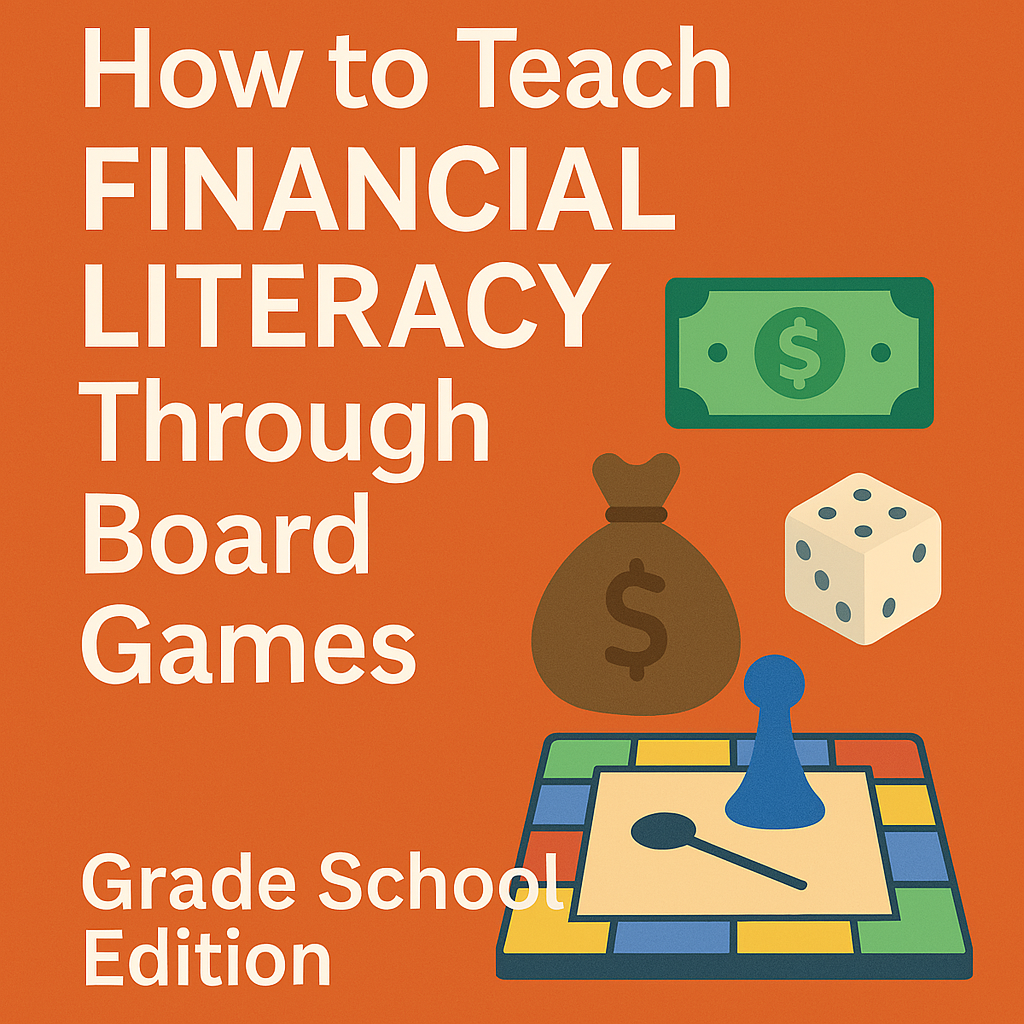
How to Teach Financial Literacy Through Board Games (Grade School Edition)
The Problem at Hand:
Teaching kids about money can be overwhelming. Budgeting, saving, and interest rates aren’t exactly topics that light up a child’s face—unless they’re learning them through a game.
Why It Works:
Kids love games. So why not use board games to sneak in a few money lessons? Playing helps them understand how money moves and how decisions matter—without a lecture.
Let’s Play and Learn
1. Pick the Right Game
Choose board games that make money fun:
- Monopoly Jr. – Easy intro to money math and property.
- The Allowance Game – Great for earning, saving, and spending.
- Pay Day – Teaches monthly budgeting.
- Life – Real-life choices and money trade-offs.
2. Chat After the Game
Ask your child questions like:
- “What would you do if you earned $10 in real life?”
- “What surprised you most about saving vs. spending?”
3. Use Play Money Around the House
- Create a mini store and have your child shop and make change.
- Use printable money and pretend salaries.
4. Talk About Real-World Terms
Slip in simple money talk during the game:
- Saving = Putting money aside
- Debt = Owing more than you have
- Interest = Extra money earned or owed
5. Let Kids Create Their Own Game
- Use cardboard, markers, and imagination.
- Add cards like “You forgot your lunch – pay $2.”
Freebies for You
- Printable Play Money PDF
- DIY Board Game Kit (cards + board template)
- 10 Must-Know Money Words for Kids
What We Learned
Games aren’t just for fun—they’re sneakily smart. Teaching kids how to manage money in a playful way helps build lifelong habits. Start simple, keep it fun, and let your child lead the way.
Try this: After your next game night, ask your child, “What was your smartest money move?”





[…] as well. Discover how you can turn board games into a valuable learning tool in our post on How to Teach Financial Literacy Through Board Games. By integrating playful learning with everyday activities, you can inspire a lifelong love of […]
[…] confident they’ll be. Let them lead, make mistakes, and celebrate their wins along the way. Learn more on financial literacy from our second post here to get more fun […]